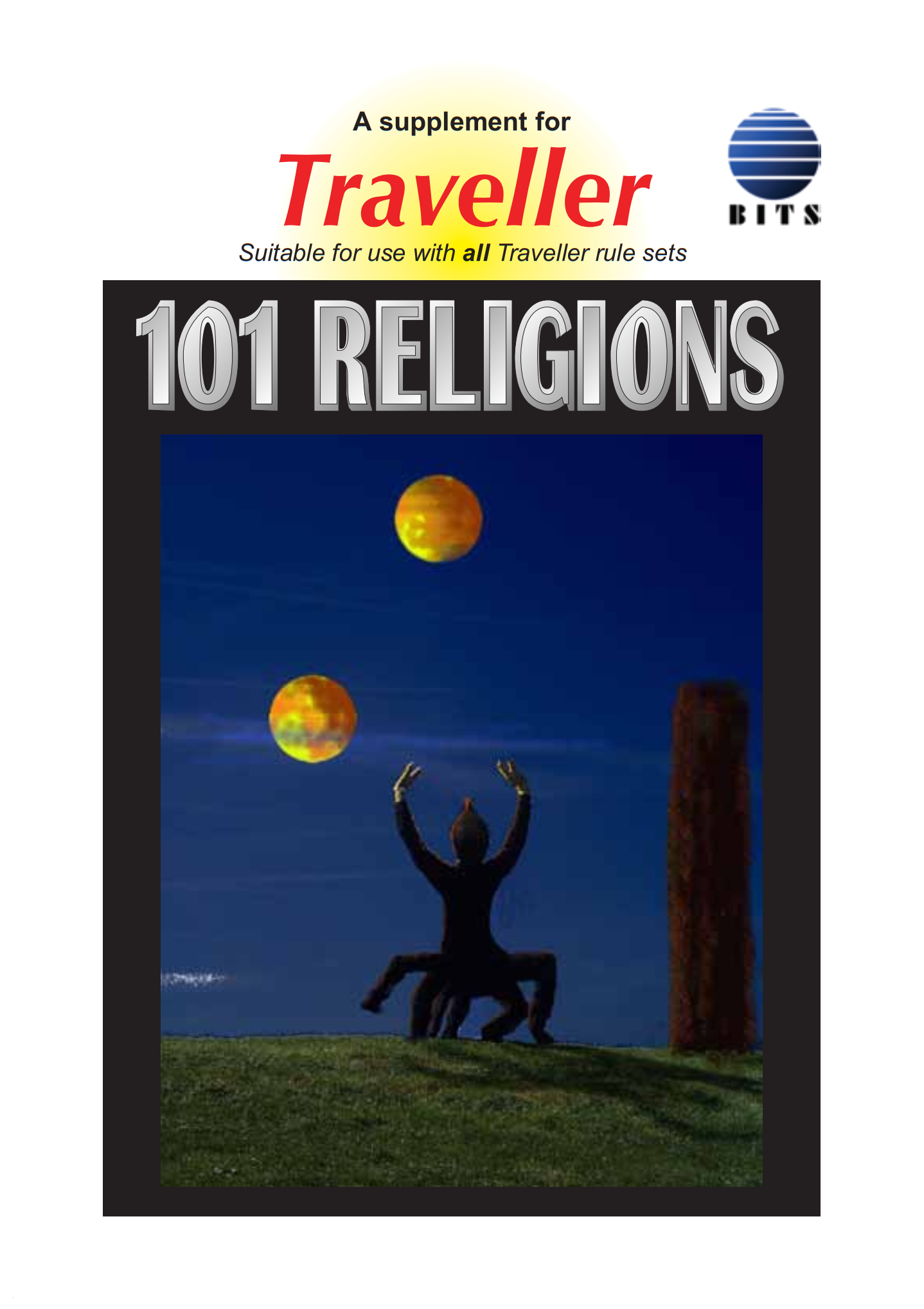101 Religions
This article originally appeared in the September/October 2020 issue.
 101
Religions. Andy Lilly et alia.
101
Religions. Andy Lilly et alia.
British Isles Traveller Support https://www.bitsuk.net
50pp., PDF
US$5.00/UKú3.93
Disclosure: The reviewer is a contributor to this product.
Although this supplement dates back to at least the MegaTraveller days, it still has utility today. Virtually its entire content was incorporated unchanged into Supplement 15: Powers and Principalities for Mongoose Traveller 1st Edition, so if you have that volume, purchase of this one is superfluous.
The booklet starts with a one-page introduction that briefly describes the role of religion in human affairs, the Imperial attitude toward religion, and the structure of the booklet. Of particular note is that development of the religions listed in the book was based on the Universal Religious Profile that appeared in the World Builder’s Handbook from Digest Group Publications; the actual profiles and explanation of the profiles are not included due to license restrictions. While it is not essential, obtaining a copy of World Builder’s Handbook is certainly recommended.
The rest of the book is a listing of religions, each with a thumbnail description of beliefs and practices, plus some additional notes of interest to referees, and a small number of adventure hooks involving the religion or its practitioners. The religions are grouped by a basic ‘Scout Service categorization’ which amounts to the type of deitic principal the religion admits. There are several thinly-disguised versions of presently-known real-world religions, several that I recognize from other non-Traveller works of fiction, though with the “serial numbers” more-or-less obscured or obliterated, and others that are undoubtedly made up from whole cloth. While a few seem rather improbable, I do not perceive any of them as going quite to the extreme of the “California Cult of the Week” (or parodies thereof). The vast majority are human-centric, but there are a small number designed specifically with non-humans in mind, and many of the human religions can easily be adapted for the use of non-humans.
There are a few minor formatting infelicities, where a header has become detached by a page or column break from the following body text. Outside of that, the book is quite readable. North American readers who might want to print this should note that this is formatted to ISO A5 paper, which will not fit 2-up on US Letter paper in landscape orientation.
Ultimately, this volume would have been more useful if the editors had been able to include the rules and explanations for the Universal Religious Profile; it is due to this lack – for understandable and legitimate reasons – that I recommend locating a copy of World Builder’s Handbook as a companion (although it is worth owning in its own right).
 Freelance
Traveller
Freelance
Traveller